Out of the box, Blender comes equipped with no less than three renderers: the Workbench, Eevee, and good old Cycles. But there are also a number of free renderers you can connect to Blender. Blender Nation sums up the currently available free add-on renderers for Blender, with the exception of 'NPR' renderers (non-photorealistic / cartoon-style renderers).
Workbench
The Workbench is the most elementary renderer that comes with Blender. The Workbench renders your standard realtime 3D viewport as you're working with it. Rendering with the Workbench is basically rendering a screenshot of your 3D viewport. The renderer's options are the same as the options you can set to change the viewport display.
Eevee
Eevee is Blender's celebrated real-time renderer, introduced with the release of version 2.8. It uses a plethora of smart 'hacks' to efficiently mimic the behaviour of light, shadows, reflections, refractions and more, while sacrificing as little rendering time as possible. This makes Eevee very suitable for animation rendering, which can quickly become very time-consuming if you need to render hundreds or thousands of frames using a more realistic renderer. Eevee is less suitable for more advanced rendering techniques though, such as accurate bounced light and recursive reflections. A more advanced renderer is recommended for that, such as Blender's Cycles.
Also, for really convincing results Eevee can be a bit cumbersome to set up with its many render settings and shadow options. And for bounced light and convincing reflections and refractions you need to fiddle with Irradiance Probes, Reflection Probes, material-level options and cache pre-rendering. Last but not least, there is no update of irradiance (bounced light) when rendering rendering multiple frames for animation.

Eevee is Blender's fast real-time renderer (image: metinseven.nl)
Cycles
Cycles is the oldest of the three included renderers. It's a solid, powerful and frequently updated path tracer capable of realistic light behaviour calculations. Path tracing is the technique of shooting a ray from the camera, which bounces off surfaces until it hits a light source. The resulting ray data is then used to interpret a tiny part of the image. When the gathered data from millions of such rays is combined, this results in a complete image.
Cycles offers advanced rendering features such as accurate bounced light calculations, recursive reflections, accurate refractions, caustics (complex focused light patterns from reflections and refractions), accurate sub-surface scattering (light absorption and scattering inside a volume), volumes (clouds, fog, etc.) and more.
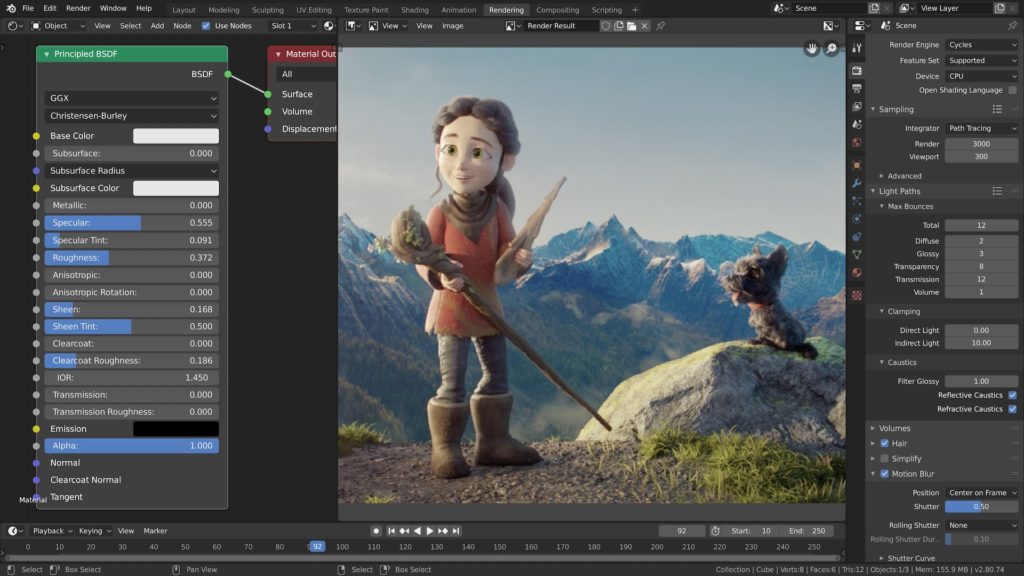
Cycles is Blender's most powerful integrated renderer (image: Blender animation studio)
Although Cycles is very capable of achieving realistic results, it also attempts to limit rendering time. To achieve this, some subtle computation restrictions are used to minimize rendering time, at the expense of a slight bit of accuracy / detail. This puts Cycles in the 'biased' category of renderers, which effectively means that some concessions are made to speed up calculations of the end result. In practice you will only notice this in specific situations where light calculations are complex, such as dark indoor scenes with only one light source casting light through a window, or a scene where caustics are prominent, such as a swimming pool or a close-up shot of a glass on a table. For this kind of scene it is advised to use an 'unbiased' renderer such as LuxCoreRender.
LuxCoreRender
LuxCoreRender is among the most powerful renderers available for Blender. Like Blender it is an open source project, maintained by a team of dedicated developers.
LuxCoreRender is an unbiased renderer, which means that as rendering time progresses it will converge to a result that is as physically accurate as possible, without the concessions in quality you get when you simplify certain rendering processes to gain rendering speed.
In order to retrieve more detailed light information from a 3D scene, LuxCoreRender offers more complex path tracing methods than a regular path tracer like Cycles. In addition to shooting rays from the camera, LuxCoreRender also shoots rays from the available light sources in a 3D scene, resulting in more detailed scene data, which becomes apparent in complex lighting situations, such as dimly lit rooms and scenes with prominent refractive elements, like glassware.
Generally speaking, scientifically accurate rendering is time-consuming because of the complex computations. But in recent versions, LuxCoreRender has added some functions to speed up rendering without sacrificing quality, such as multiple caching options and GPU acceleration, including NVIDIA CUDA support. At the time of writing, NVIDIA OptiX support will follow in LuxCoreRender version 2.5.
LuxCoreRender also offers live-updated viewport rendering, and is compatible with most Cycles material and texture nodes, which makes LuxCoreRender a potent replacement for Cycles. For optimum results it is recommended to use the dedicated LuxCoreRender material and texture nodes though. Basic material node presets are conveniently available, but even better: LuxCoreRender also comes with a free material and asset library, featuring hundreds of pre-made free materials and free 3D models.
Last but not least, it's also worth mentioning that some of the available render farms offer support for LuxCoreRender, which is very interesting if you'd like to combine the advanced rendering capabilities of LuxCoreRender with deadline-friendly rendering speed.

LuxCoreRender is capable of complex light behaviour computations such as dispersion (image: Charles Nandeya Ehouman, a.k.a. Sharlybg)
Radeon ProRender
Processor manufacturer AMD offers its own free path tracing renderer that is also available for Blender. ProRender is a competent renderer. Because it is a relatively young renderer, it is not as feature-complete as Cycles or LuxCoreRender, but it is an accessible renderer that's well-integrated in Blender. Radeon ProRender is particularly interesting to Blender users working with macOS, because unlike Cycles, ProRender fully supports Apple's Metal graphics library, taking advantage of that to accelerate rendering on macOS systems.
Radeon ProRender offers real-time updated Blender viewport rendering, but it can not render Cycles materials without converting them to ProRender nodes. The Cycles to ProRender material converter is integrated and works at the touch of a button. ProRender also offers a convenient material preset library to get you going quickly.
OctaneRender
OctaneRender is a well-known, fast, unbiased, GPU-oriented renderer. Although it is essentially a commercial product, OctaneRender is available for free with the limitation of being able to use only one GPU in case you own multiple GPUs.
In order to achieve full Blender integration with real-time viewport updates, OctaneRender comes with a custom Blender build that is frequently updated by OctaneRender developers OTOY. This means you can not use OctaneRender in daily Blender alpha / beta builds, so you'll have to make some concessions in terms of access to cutting-edge Blender features, or switch between two Blender versions.
OctaneRender is not compatible with Cycles materials and texture types. You need to use Octane material and texture nodes. There is a Cycles to Octane material converter, but at the time of writing it has not yet been updated to Blender 2.8.
Appleseed
Like LuxCoreRender, Appleseed is an open source project. In terms of technical capabilities and rendering results, I guess Appleseed floats somewhere between Cycles and LuxCoreRender. For example, Appleseed is more capable of rendering detailed caustics than Cycles.
Appleseed is an interesting, potent renderer capable of realistic results, but its main limitation is that it is purely CPU-based, making it not the best choice if you've got a competent GPU in your system. Another disadvantage of Appleseed is that there is no macOS version of its Blender integration add-on.
At the time of writing, Appleseed offers real-time Blender viewport updates, but it is not compatible with Cycles materials and textures. Appleseed works with its own materials and textures.
Yafaray
Yafaray is one of the oldest renderers with ongoing Blender support, going all the way back to 2002, years before Cycles was added to Blender. Formerly known as YafRay (without the extra 'a'), the title refers to 'Yet Another Free Ray-tracer'.
Like LuxCoreRender and Appleseed, Yafaray is an open source project, and is still actively maintained, although it seems to be a relatively obscure renderer when compared to the previously discussed renderers.
Yafaray offers comparably advanced rendering techniques as LuxCoreRender and Appleseed, and Blender is its main host package. At the time of writing, Yafaray does not support real-time Blender viewport updates (you need an active Image Editor to view production rendering output), and is not compatible with Cycles materials and texture types, but offers its own materials and textures.
On a side note, there's also a fork project of Yafaray called TheBounty, but at the time of writing that is not yet publicly released for Blender 2.8. Only a preliminary version is available for a limited group of testers.
Other free renderers for Blender
At the time of writing, some more free renderers are available for Blender, but those come with limitations.
For example, Pixar's great Renderman renderer is free for non-commercial use, but the Blender add-on hasn't been updated to be compatible with Blender 2.8. Pixar doesn't seem to be interested in Blender anymore, after a period of promising attention back when Renderman was made available for free. The person who was responsible for the marriage between Renderman and Blender, Brian Savery, moved to AMD to lead the Radeon ProRender project.
— Update, September 2020: Pixar has announced that Renderman version 24 will be accessible via a new, official Blender to Renderman bridge add-on when it will be released in early 2021.
Then there's the oldest free ray-tracing renderer of all mentioned renderers in this list: POV-Ray (the title refers to 'Persistence Of Vision'). POV-Ray is still being developed, and the bridge to the renderer is included as an add-on in the Blender releases. But POV-Ray is also the most obscure renderer of all, predominantly used by a small subculture of rendering enthusiasts who have been using POV-Ray for a long time. For cutting-edge Blender rendering developments and support I would recommend going for a much less obscure renderer like LuxCoreRender, which is my personal favorite.
Furthermore, there's an interesting, scientifically oriented open source renderer called Mitsuba, but at the time of writing there is only a relatively simple Blender exporter for the recently released Mitsuba version 2.
Finally, a free version of a relatively new renderer called D5 is available via a Blender add-on. The D5 renderer's website doesn't offer much information yet, but it might be an interesting renderer to keep an eye on.
Did I miss a free renderer that's available for Blender? Please let me know in a comment, and I'll add it to the list. Thanks in advance.


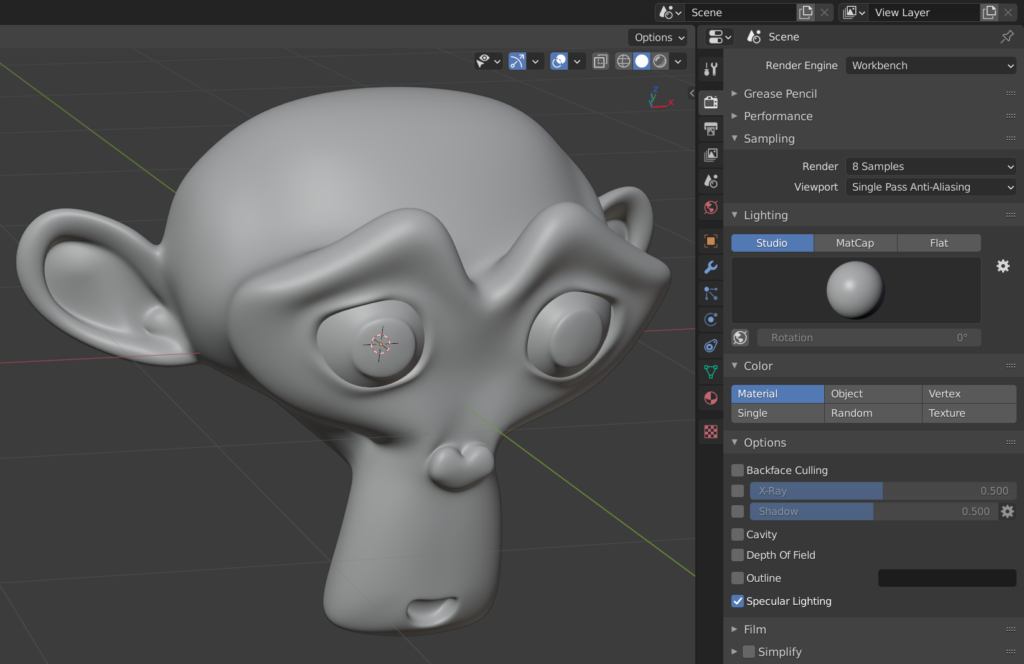

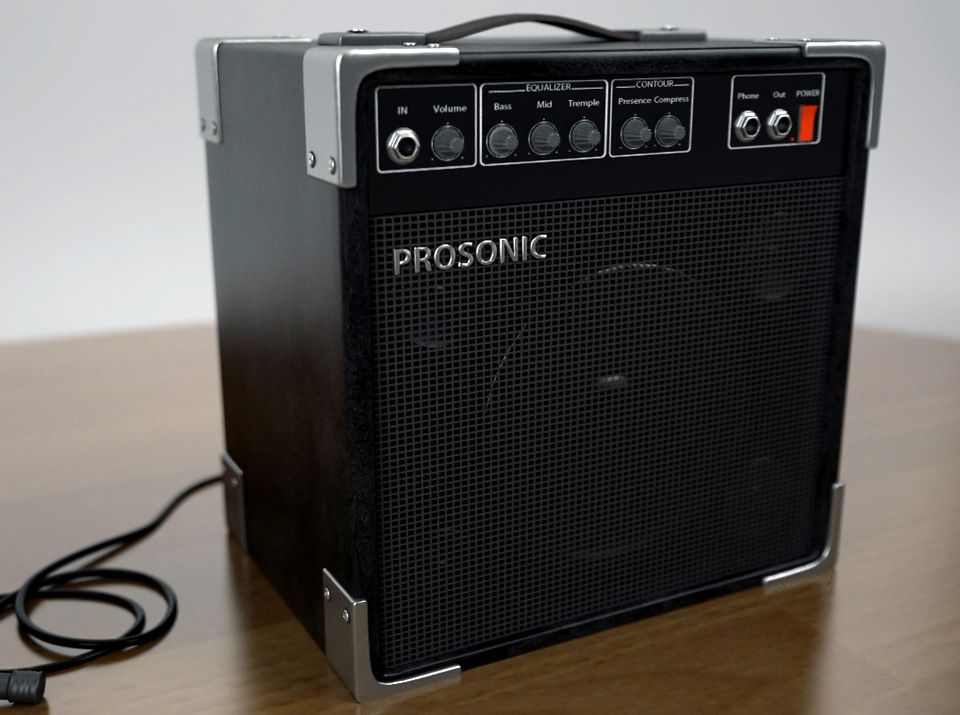



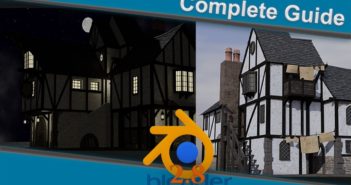
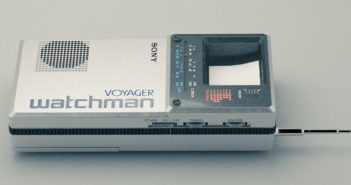
25 Comments
A good thing to add is that LuxCore is supported by some render farms out there, so that's definitely an advantage over other 3rd party renderers.
Thanks, good point!
With things like light tracing, caustic cache, light groups and so on Lux is simply the best render engine for architectural renders, especially interiors.
LuxCoreRender is also my favorite renderer.
POV-Ray is also a free Renderer and it produces Raytraced images means they are free of any noise.
So depending on what you want, also POV-Ray can be a good solution.
Having taken a look on Appleseed and Yafaray, I would say that these Renderes
currently do not have such a active development like Luxray. The versions are all
behind the actual Belnder version.
Appleseed while it says that it can make caustics, can not render real dispersion in colours at this time.
WIth Yafaray i could not find any advantage over the "Normal renderers".
Luxray is very popular in Interior rendering because of the realism of the result.
However if you just need to render some molecules you can also choose Eve or POV-Ray.
Depeneding on the Artist also with POV-Ray there are amazing Results possible, and they are free of any noise.
Sample:
http://www.lilysoft.org/CGI/SR/Spectral%20Render.htm
Hi Theo,
Thanks. I had already listed POV-Ray in the last paragraph.
It's worth mentioning POV-Ray's most distinct feature, which is powerful scene description language.
Good article but for a noob like myself it doesn't answer some basic questions. Do those renderers support real-time preview in the viewport? How do you create materials for them? Do they support Blender's node editor materials?
Thank you
Good points, I'll add the info.
Added the extra info, thanks for the suggestion.
Thank you! That was so quick.
You're welcome!
The topic is interesting for anybody who uses Blender.
However Mitsuba - theoretically a good thing - is outdated.
As well as Yaf(a)ray. So we can put them possibly aside.
D5_Render leaded to a Facebook-Page and from there i could not find a way where to really get it.
Also it looked a bit "Beta-and we will sell it when its ready".
My personal impression.
Radeon Pro Render is a real Alternative to the otehr free Renderers included with Blender,
especially - but not only - because of its extensive Material Library which is included (but need you to run a separate Setup-Program).
It has some weakpoints - so it fails on complex scenes that have objects which were 3D-Scanned.
Sometimes using tiled rendering you can make it work in high resolution.
At other times it may crash under heavy load.
It has also advantages:
- interesting for Beginners because of the builtin easy to use Material Library
- faster and uses less Memory then the other Renderers
- In Tiled Rendering it uses GPU and CPU in a unique way that is cache friendly.
The viewport is perfect and also the responsiveness is the best from all renderers, will even beat cycles.
Means "It will not hang".
The second real alternative is Luxrender and the Picture from Sharlybg shows where it has its strengths.
About this your article shows the important points.
The free Octane Render here in my test showed up as completely useless, buggy. Not working. And wanted to be permanently online with an extra server. A noGo for me.
SO after all i have only these 3 Renderers left: POV-Ray, Luxray and Radeon Pro Render.
And POV-Ray is a special case.
Thank you for your additional impressions Theo, much appreciated!
It would be fun, if the same existed for EEVEE. Meaning if you could use a game engine (Godot for example or Unity) to render in real-time inside Blender instead of EEVEE, not to replace it but to have choice and also if they can do things EEVEE can't do yet.
Agreed!
About POV-Ray, in 2.83 (probably anything above 2.8?) it doesn't seem to work correctly. The nodes seem broken, can't change materials etc. Am I doing something wrong?
The best thing to do is ask this in one of the POV-Ray newsgroups:
http://news.povray.org/groups/
Alternatively, you could open a POV-Ray topic at the Blender Artists community:
https://blenderartists.org/
Blender 2.8 broke all the API for the second time. Most vital functionality has been restored by now. Please provide your POV-Ray feedback (as detailed as possible,with simplified sample files) for the improvement of the addon. Our pace is slow but continue. Co-developers are welcome of course, but we also have almost no user feedback currently ! The "Beepover" Persistence of Vision Blender addon is still actively maintained as of today (Blender version 2.91.2), getting ready for POV 3.8 ;-)
when changing the article, RENDERMAN officially supported by Blender in version 24.
I've inserted a little update below the part about Renderman.
It will possibly be interesting 2021. Until the nnot. And then the question is "What means for non commercial Projects?". If i make "non-commercial projects" the available Renderers are perfect for everything.
So possibly RENDERMAN will land as a new commercial Renderer after all.
Pixar is a very commercial enterprise, so there will be a profitable strategy behind their Renderman usage policy. After all, that what is popular can be made profitable. Blender is the ideal example of that.
I see the interesting point here, in the fact that the person behind the earlier Renderman is now doing the free Pro-Render for AMD. Renderman does not sound interesting to me at this time. This may be different for people who already use it on other platforms and want to use it with Blender too. AMD Pro Render has already quite some unique features that make a difference to nearly the whole competition. Its a very new product and needs a bit more time, but there are already some solutions built in that are unique.
For example when using the CPU and the GPU's for rendering, Pro Render will make all of them just work "on the same tile". Most other renderers let the resources each render a separate tile. This has a large disadvantage when you mix devices that are not equally fast. Because at the end, the GPU'S are idle while the CPU's are still busy. And this wastes resources. So about this Point, Pro Render is already a step ahead. I am confident it will be an interesting player.
Let me say a word on Octane. I have downloaded their free Beta thing a while ago.
Not only that it did not work at all, it also tried to install a sort of "WEB-Server" Module that will permanently send and receive data to their company. So after all i deleted it and wrote it to their forum. This thing i downloaded there was technically not usable. Not even Alpha. And also i do not like this "permanent online" Philosophy. You don't know what some people can make out of it, if they have tools on your computer which are always online.
For non photo realistic rendering try Beer.